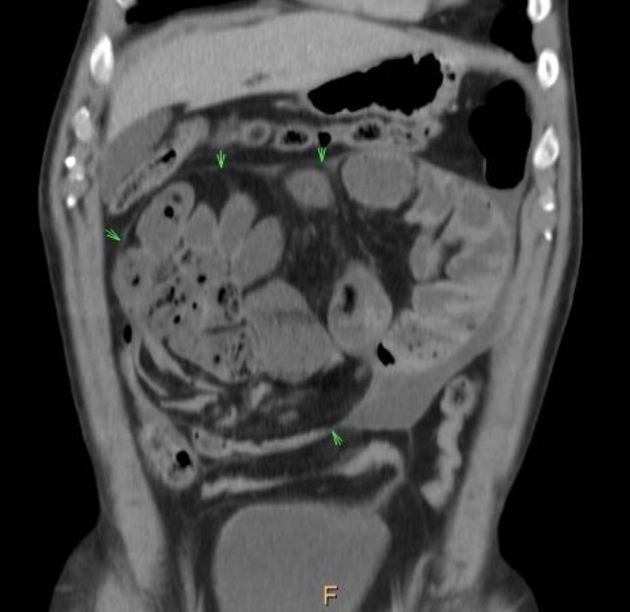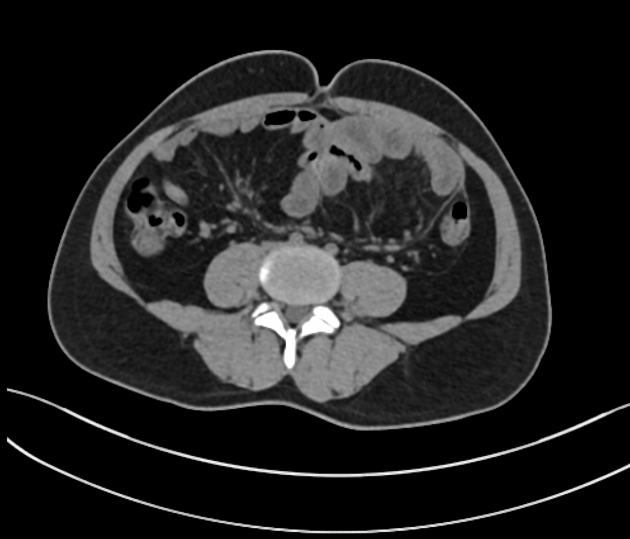Congenital peritoneal encapsulation (CPE) is an extremely rare condition of abnormal embryonic gastrointestinal development. It is characterized by the congenital development of an accessory peritoneal layer partially or entirely encapsulating the small bowel.
On this page:
Epidemiology
Congenital peritoneal encapsulation has a very low incidence and is often discovered incidentally, either intra-operatively or during autopsy.
Clinical presentation
Most cases are asymptomatic and the preoperative diagnosis is challenging as it is rarely complicated by intestinal obstruction.
Pathology
Peritoneal encapsulation is a general term used to describe three different entities 1,4:
congenital peritoneal encapsulation (CPE)
abdominal cocoon (AC)
Congenital peritoneal encapsulation is characterized by the development of an accessory peritoneal layer by the 12th week of gestation which creates an accessory peritoneal sac that partially or completely encapsulates the small bowel 2-4.
Radiographic features
Plain radiograph
Usually normal or nonspecific, unless complicated by small bowel obstruction. If small bowel obstruction is evident, plain radiographs probably will be able to detect the dilated small bowel loops or multiple air-fluid levels.
CT
CT is the gold standard for diagnosis. Patients undergoing CT scans are usually symptomatic. Features include:
CT will demonstrate an accessory peritoneal sac that encapsulates dilated and clustered small bowel loops giving the appearance of a cocoon
the sac will show a thin layer of peritoneum which is very helpful in differentiating the congenital condition from other acquired pathologies such as abdominal cocoon and encapsulating peritoneal sclerosis
the sac will displace and splay the mesenteric vessels posterior to it helping to differentiate the condition from paraduodenal hernias
CT is helpful to exclude complications such as bowel ischemia or perforation
Treatment and prognosis
CPE usually managed surgically if presented with bowel obstruction by resection of the encapsulating membrane and release of any associated adhesions.
Differential diagnosis
-
encapsulating peritoneal sclerosis
acquired condition seen secondary to a variety of conditions such as peritoneal dialysis, peritoneal shunts, and tuberculosis
formed membranes will be thick, enhancing with or without peritoneal calcifications 6
abdominal cocoon: idiopathic acquired condition with similar features to encapsulating peritoneal sclerosis
History and etymology
Cleland was the first to describe CPE in 1868 as a rare congenital malformation resulting from the development of an accessory peritoneal membrane partially or completely encasing the small intestine and creating an accessory sac 5.






 Unable to process the form. Check for errors and try again.
Unable to process the form. Check for errors and try again.